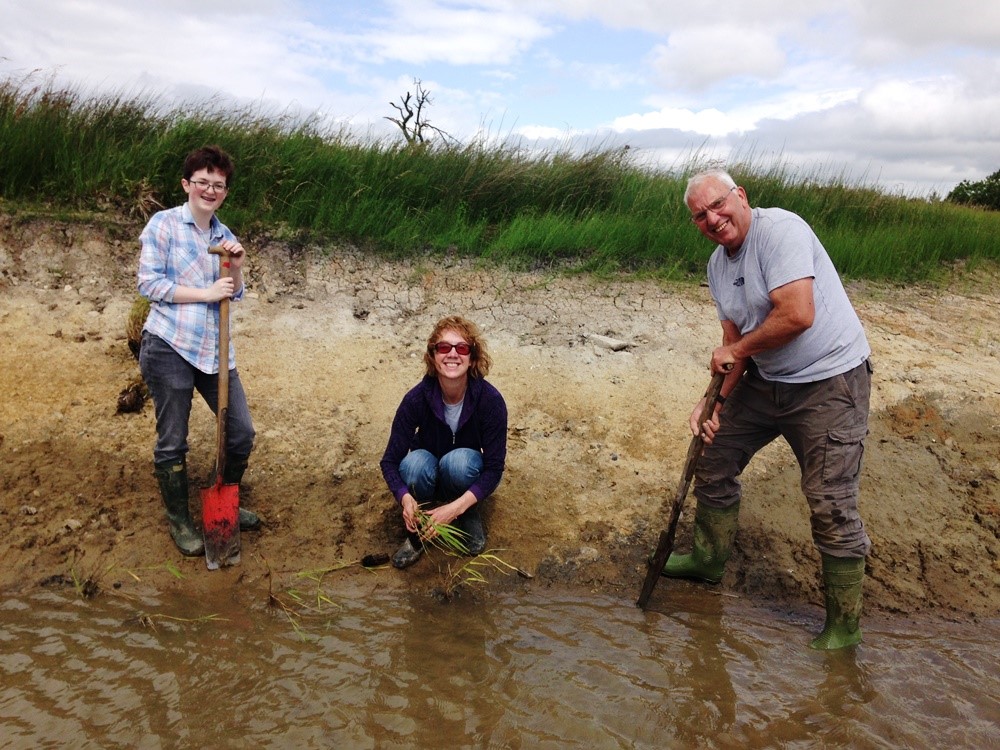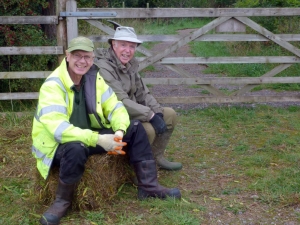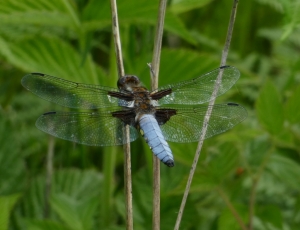Marvellous Moths
Wednesday, April 8th 2020
Moths can be found all year round; some are day flying (or diurnal) and others are nocturnal. Of the latter, certain species are attracted to light. Lepidopterists (people who study or collect butterflies and moths) make the most of this and use special mercury vapour moth-traps to catch them for recording purposes. There are other techniques such as 'sugaring' - attracting them to a sticky mixture (usually painted onto trees) and 'wine-roping' - using a mixture of red wine and sugar, soaked onto a length of rope and draped into foliage. However, you don't have to be an expert to have a closer look at moths as many are lured to artificial lights on buildings too especially when the weather is warm and dry. A quick check around external lights and windows in the morning can lead to some interesting finds. The lights outside the field centre seem to be very appealing to the Foxglove moths! They are surprisingly fun to identify with a myriad of intricate patterns to explore. Different species have different 'flight seasons' which is useful when trying to identify them. There are lots of good moth books available and there is also plenty of help online such as the 'moths on the wing by month' pages by the Yorkshire branch of the Butterfly Conservation Trust. Another useful resource is the UKmoths online guide. Many moths are quite variable in appearance, so don't just look for an exact match. If you don't find what you're looking for you can also contact your Vice County Recorder - you can find their contact details on the Recorders website.
Here are a few to look out for this month in North Yorkshire:
Hebrew Character, named after the black mark in the centre of its forewing, which is unique amongst spring-flying moths.

The Twin-spotted Quaker is tawny coloured and has two black spots on the inner edge of its forewing. These common moths come to light and sugar, and feed at sallow catkins.

The ash grey Early Grey is rough in texture and has a beautiful marbled appearance. This species feeds on honeysuckle and is therefore often found in gardens.

Some species such as this Pine Beauty rest with their wings folded tightly against their body. When sitting head down on the tip of a shoot, this small moth closely resembles a pine bud.

Early Tooth-striped moths have a single generation (some species have two) and are only on the wing in April and May. They can be found at rest on tree trunks and posts during the daytime and fly from dusk.

Finally, Clouded Drab is also commonly found in back gardens feeding at sallow catkins and Blackthorn flowers.

If you find any moths in your garden we would love to see your photographs on our Facebook page, happy mothing!
(0) Comments:
There are no comments for this blog post yet. Why not start the discussion? - use the form below:




